Watercolour Babies
Country Scene
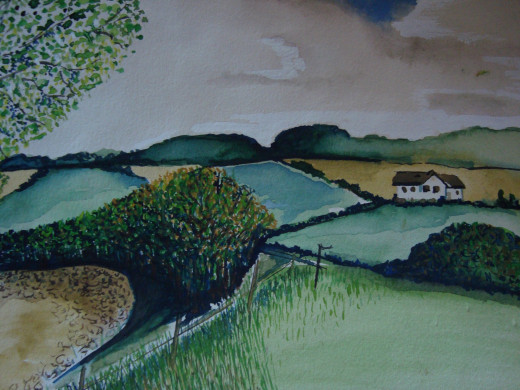
The Positive Approach
Most beginners are terrified to make mistakes when they try watercolour painting, so firstly develop the ability to be kind to yourself...as far as your efforts are concerned! The more you paint , the more you will be aware of your progress and which areas you need to develop and practise further.
Drawing and Painting From Nature
Select the composition you wish to paint.. I would suggest flowers, plants or a small Still Life arrangement. Study the individual items and their spacial relationship to each other. Using a good quality pencil , make a line drawing of the forms on watercolour paper or sketchpad. Try to capture any structural details like leaf veins, flower stamens, textural effects- this will help you to create detail later when you paint.
Also......Sweet Pea
Those who "know" usually say things like " An artist can only specialise in one medium...either watercolour or oil painting " I do not agree. Some of the most famous artists who painted in oils, were also watercolour artists, check out some of the following when you have some time...
- J. M. W. Turner
- Edward Hopper
- William Blake
- Paul Cezanne
My main source of income over the last twenty odd years was as an art teacher or tutor in a variety of schools . In my own time , especially in the long bright days of summer, I like to relax and paint - perhaps a beautiful plant from the garden, or a bunch of freshly cut flowers. This allows me to experiment with colour combination, contrasting textural effects and analysis of my own progress.
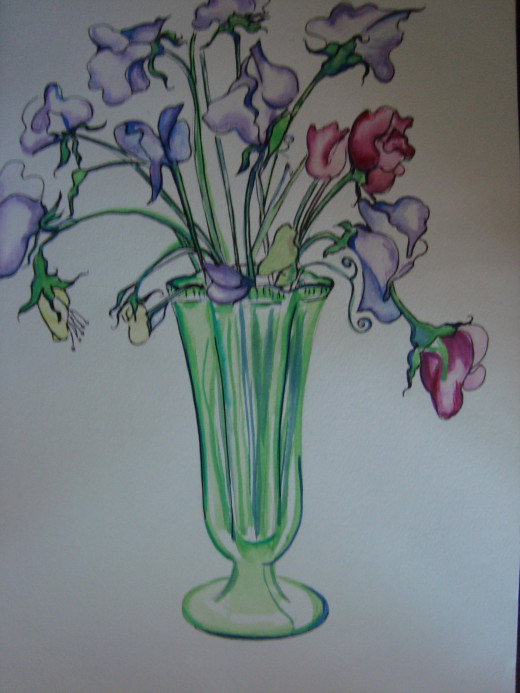
Brushes and Paints
Good quality materials are essential ! Make sure to select the best you can afford [ by a reputable maker] most art suppliers will advise and help if asked. A selection of different size brushes, a quality set of watercolours, maybe a couple of small sponges, and a container for water. The paper you use should be for watercolour painting and is usually available as sketchpad or individual sheets.
If looked after these paints and brushes will last for a long time. Always clean your brushes properly after use and mix paint on palette lid or ceramic / tin plate- not on top of another colour.
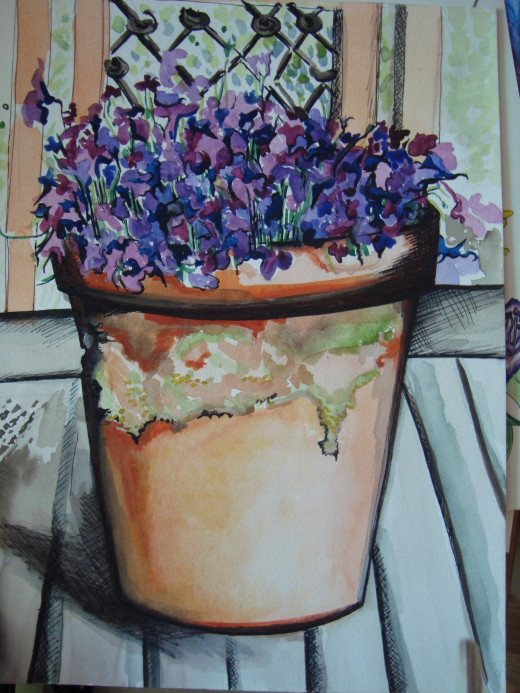
Some examples of my work are included on this hub
. A study of the more famous watercolour artists cannot be strongly enough recommended.Lets face it, when you finally produce the painting that you love .all that research and effort will suddenly be so worth it!
Processes Involved
Preparation To Paint
- Fill a jug with clean water.
- Arrange your selection of brushes in front of you - ready to use. The finer brushes will be needed to complete detail in your composition.
- Care of Colour...make sure to keep your colours as clean as possible , to maintain the purity of the tonal value. All colour mixing should be done on your plate/ mixing tray.
- Layering of colour. The first layer of colour should be very light in tone -as later layers will strengthen the colour intensity. Allow layers to dry before building up the colour intensity.
- Adding Intensity- Now you need to return to your painting and look at the colour intensity, making decisions about where to build the colour in order to create depth in your picture, and achieve a correct balance of tone.
- Creating Shadows- Using darker tones - but not black- try to create the shadows or shaded areas within your composition.
- Outline- This is a personal choice and should not be too dominant as the main objective is to create a wonderful watercolour !
- To Frame or not to Frame?- A personal decision and highly dependant on the end product and how delighted you are!
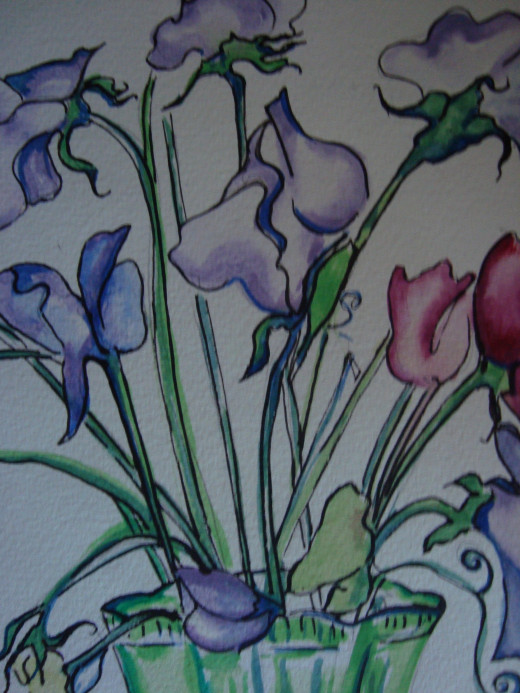
Some Hyperlinks to Enjoy
videos
Please watch videos on the Tate. Org. Website with commentaries on watercolour exhibitions. Some great paintings.[ Hyperlinks above.]
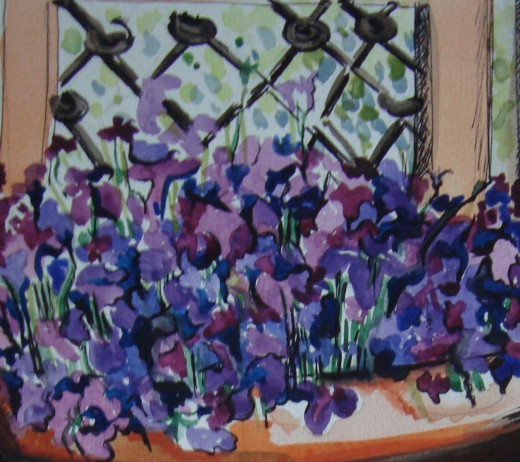
Opinions and comments
Please use this space to add your comments and suggestions ..enjoy








